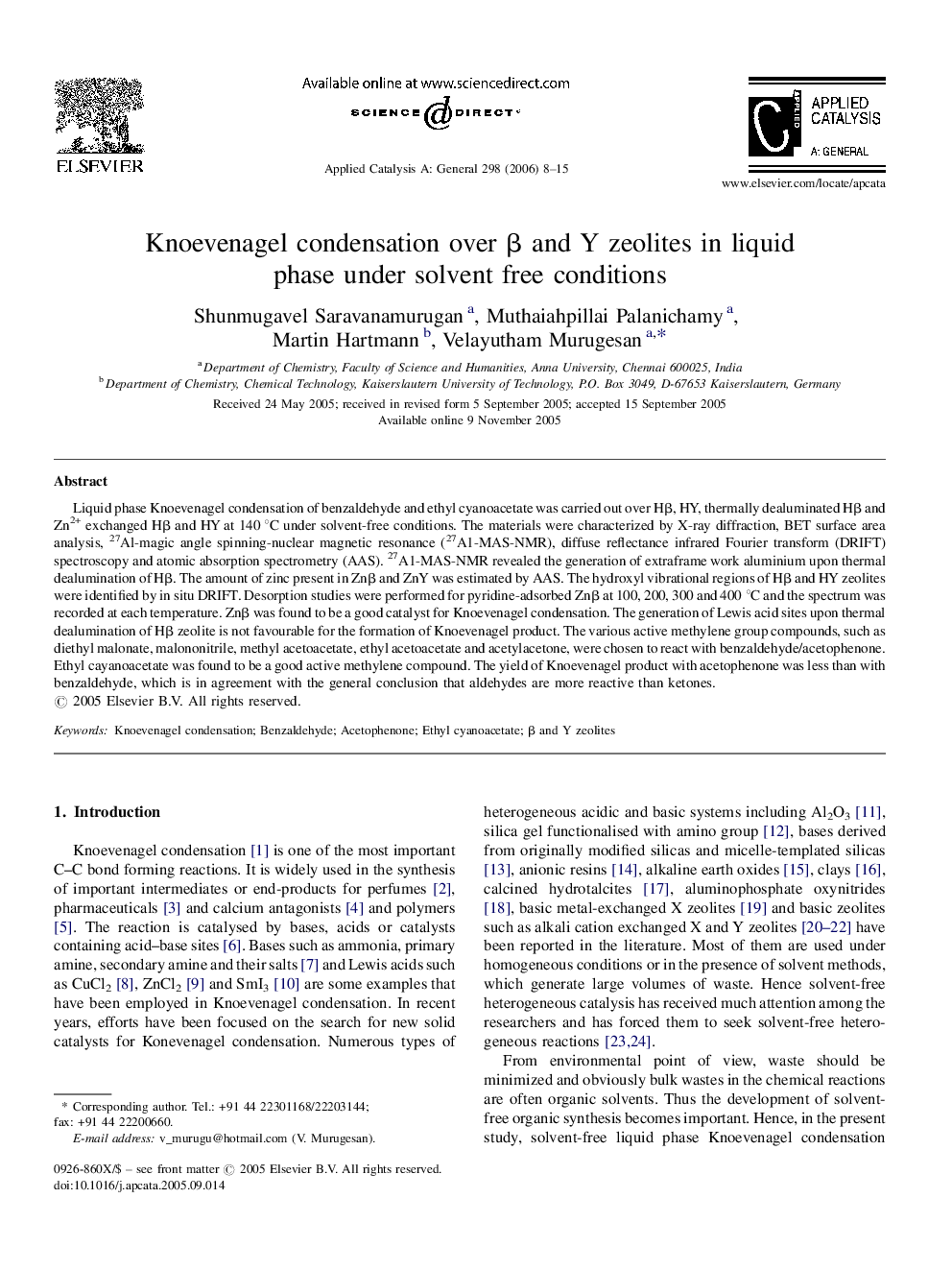| Article ID | Journal | Published Year | Pages | File Type |
|---|---|---|---|---|
| 44242 | Applied Catalysis A: General | 2006 | 8 Pages |
Liquid phase Knoevenagel condensation of benzaldehyde and ethyl cyanoacetate was carried out over Hβ, HY, thermally dealuminated Hβ and Zn2+ exchanged Hβ and HY at 140 °C under solvent-free conditions. The materials were characterized by X-ray diffraction, BET surface area analysis, 27Al-magic angle spinning-nuclear magnetic resonance (27A1-MAS-NMR), diffuse reflectance infrared Fourier transform (DRIFT) spectroscopy and atomic absorption spectrometry (AAS). 27A1-MAS-NMR revealed the generation of extraframe work aluminium upon thermal dealumination of Hβ. The amount of zinc present in Znβ and ZnY was estimated by AAS. The hydroxyl vibrational regions of Hβ and HY zeolites were identified by in situ DRIFT. Desorption studies were performed for pyridine-adsorbed Znβ at 100, 200, 300 and 400 °C and the spectrum was recorded at each temperature. Znβ was found to be a good catalyst for Knoevenagel condensation. The generation of Lewis acid sites upon thermal dealumination of Hβ zeolite is not favourable for the formation of Knoevenagel product. The various active methylene group compounds, such as diethyl malonate, malononitrile, methyl acetoacetate, ethyl acetoacetate and acetylacetone, were chosen to react with benzaldehyde/acetophenone. Ethyl cayanoacetate was found to be a good active methylene compound. The yield of Knoevenagel product with acetophenone was less than with benzaldehyde, which is in agreement with the general conclusion that aldehydes are more reactive than ketones.
